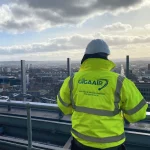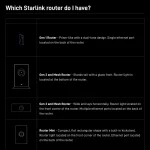40 MPs Call for Ofcom to Monitor UK 4G Mobile Coverage Obligations
More than 40 MPs from the All-Party Parliamentary Group on Rural Business (APPGRB) have today called on Ofcom to introduce better “annual monitoring” in order to ensure that Mobile operators like Vodafone, Three UK, O2 and EE keep to their future 4G and 5G (mobile broadband) coverage obligations.
According to Ofcom’s most recent Connected Nations 2018 report, geographic 4G (LTE) mobile network coverage from all operators is 97% in urban locations but sadly this falls to only 62% in rural areas. Thankfully the Government have committed to extend geographic mobile network coverage to 95% of the UK by 2022.
In keeping with the above, Ofcom’s forthcoming auction of the 5G friendly 700MHz radio spectrum band includes new coverage obligations (here). This should extend outdoor data coverage to at least 90% of the UK’s entire land area and provide coverage from at least 500 new mobile mast stations in rural areas, among other things.
Advertisement
The 700MHz Coverage Obligation
The binding coverage rules mean that up to two winning bidders would each have to, within 4 years of the award:
1. Extend good, outdoor data coverage to at least 90% of the UK’s entire land area within four years of the award.
2. Improve coverage for at least 140,000 homes and offices which they do not already cover. This means new coverage will be targeted at areas that are harder to reach; and
3. Provide coverage from at least 500 new mobile mast stations in rural areas. This will ensure operators transform coverage in areas where it is lacking, rather than meeting the rules by just boosting existing signals.
However the APPGRB’s letter to Ofcom questions how this will be monitored because, at present, there is “no obligation on mobile operators to report on successful mast completions until the end of the review process” in 2024. It also notes that operators have “historically been reluctant to build masts in rural areas owing to the significant costs involved.”
Julian Sturdy MP, Chair of the APPG on Rural Business, said:
“While Ofcom’s initial announcement truly has the potential to revolutionise mobile coverage across the countryside, it will fall by the wayside if progress is not monitored on a regular basis. We need annual reporting to ensure that mobile operators are holding their promises to the public on delivering a 4G network which works for people wherever they live.”
Mark Bridgeman, CLA Deputy President, said:
“Increasing 4G coverage will unlock the potential of rural businesses and the countryside and we cannot let this opportunity slip owing to lax oversight. Given mobile operators’ previous reluctance to invest in rural areas, annual reporting on progress should be compulsory.
Ofcom have made great strides in this area in recent times and it would be a shame if they did not take the simple step to give themselves the tools to publicly keep mobile operators to their word on expanding rural 4G coverage and ending the “digital wilderness”.”
As usual there are two sides to every story and the “significant costs” involved with reaching rural areas is not the only challenge. Many mobile operators would also like to build taller masts beyond the current 25 metre limit (it’s even lower in some parts of the UK, such as Wales) because this is one way to significantly boost coverage, while keeping costs under control.
Around the EU a lot of countries have a 50m limit and the old 25m one seems increasingly redundant in the era of towering wind turbines. On top of that many rural residents often demand better mobile coverage, yet at the same time many will also object to planning applications for new masts. This creates a difficult problem for mobile operators to solve without Government help.
Last year’s Future Telecoms Infrastructure Review (FTIR) made a number of rough proposals to help support mobile coverage (e.g. reviewing the recently revised electronic communications code, changing planning regulations and opening Government infrastructure up for use by operators etc.), although it remains to be seen what the actual outcome of that will be.
Advertisement
Mark is a professional technology writer, IT consultant and computer engineer from Dorset (England), he also founded ISPreview in 1999 and enjoys analysing the latest telecoms and broadband developments. Find me on X (Twitter), Mastodon, Facebook, BlueSky, Threads.net and Linkedin.
« Persimmon Sues BT Over Unpaid Bill for New Homes Infrastructure

















































Comments are closed